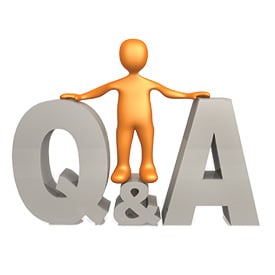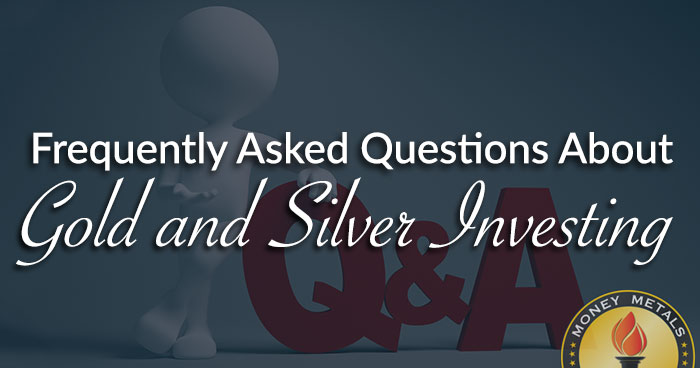We get lots of questions from the public about precious metals. Some people are curious about the basics. Others are skeptical about the case for owning gold and silver. Still, others are longtime customers who have highly specialized inquiries.

Here we will answer a few of the most common, most broadly relevant questions we get…
Even if you’re a seasoned metals investor, you can surely find value in this FAQ. Just about every gold and silver bug has been hit with questions from doubting friends and family members to the effect of, “What’s the point in owning these shiny objects?” There are many points – including some you may have overlooked.
QUESTION: Why do fractional coins and bars cost more per ounce?
ANSWER: In general, the smaller the size of a minted item, the greater the proportion of the total cost to the minting and handling costs.
It costs almost as much per item to mint a 5-gram gold bar as it costs to mint a 1-ounce gold bar, even though the gold value of the 5-gram bar is less than one-sixth.
That translates to a higher premium (percentage-wise per ounce) for the smaller items.
QUESTION: Are you required to report my purchase to the government?

ANSWER: This is a relatively common question, and it reflects a concern that stems from the U.S. government’s shameful history of ordering citizens to turn in their gold in 1933. But dealers are not required to report your purchase of precious metals about 99.998% of the time, with one extremely rare exception.
For a disclosure requirement to be triggered, BOTH of the following conditions has to be met:
- The transaction is (or related transactions are) larger than $10,000 in size, AND
- Payment is made using actual cash (i.e. Federal Reserve notes and U.S. coins) OR with two or more cash instruments (defined as money orders, cashier’s checks, or traveler’s checks) which, individually, are $10,000 or less but when totaled together equal more than $10,000.
Personal checks, debits, bank wires, and credit card payments are NOT considered cash or cash instruments, and, therefore, purchases using them do not trigger disclosure by a dealer regardless of their amount(s).
QUESTION: If I want to borrow cash against my gold and silver, what is your interest rate and minimum loan size? Do you lend in all 50 states?
ANSWER: Money Metals is by far the best and most convenient place in America for the typical investor to get a loan against their gold or silver. Your collateral metals must be held at Money Metals Depository, and the loan minimum size is $25,000 in most states.
The current annualized interest rate at Money Metals is 5.75%. Due to state regulations, we will not currently lend to individuals and businesses located in California, Nevada, North Dakota, South Dakota, or Vermont. You can apply for a loan here.
QUESTION: If the economy collapses, won’t gold go down with everything else?
ANSWER: Not necessarily. Gold is a counter-cyclical asset. It shows virtually no correlation with the stock market (and other conventional assets), meaning it can go up when stocks fall – especially if investors in large numbers seek gold as a safe haven.
During a major market selloff, such as the credit crunch in 2008 or the March 2020 pandemic freak-out, gold temporarily sold off due to forced liquidation sprees.
But in both cases, the yellow metal rebounded quickly and made new highs, even as the stock market experienced only a moderate recovery.





